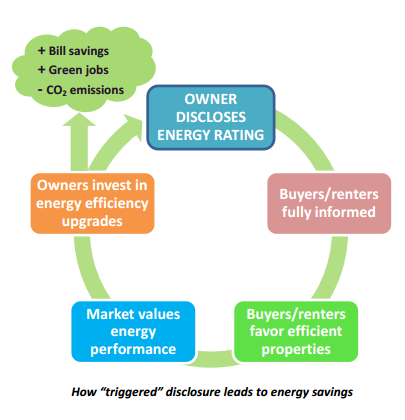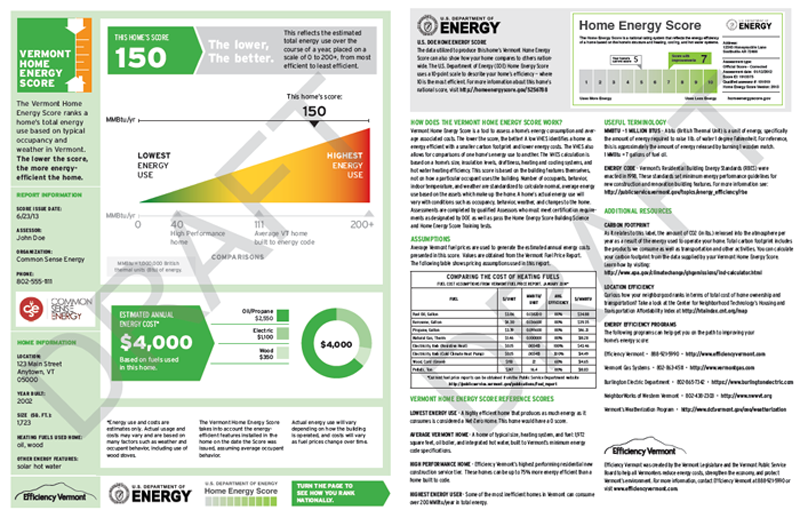The Vermont Home Energy Score: a label that matters
Emily LevinChair of the Vermont Home Energy Label Working GroupJune 2016 Update: Home Energy Labels are now available. Now known as the Vermont Home Energy Profile, this tool is an independent, unbiased assessment that summarizes the estimated annual energy usage, estimated annual costs, and a national energy efficiency score of a home. The Profile is available through Vermont contractors, home inspectors, and energy auditors who have been certified as Vermont Home Energy Profile assessors. Contact Efficiency Vermont customer support to learn more.
An air-tight, well insulated home makes sense, especially when you are paying your heating bills in the middle of a long Vermont winter! But energy efficiency is hard to see, which makes it difficult to prioritize when it comes to home buying or home energy upgrade decisions.
In the fall of 2013, the Vermont energy labeling working group asked Vermonters to weigh in on the future of how to score the energy performance of our homes. Feedback was collected from an Efficiency Vermont blog post titled, An MPG Rating for your Home, through a more formal public comment period with the Vermont Public Service Department, focus groups, and consumer testing with Vermonters. The goal of this extensive process was to be sure that the home energy label created for Vermont homes would provide meaningful information that would enable home buyers, sellers, and owners to factor energy use into their decision-making.
Why label buildings?
According to a 2009 report from Northeast Energy Efficiency Partnerships, labeling homes is an important step towards making energy efficiency transparent to buyers and renters and allowing the market to reward good building energy performance. Like Vermont, a few states such as Massachusetts and Oregon have embarked on a mission to encourage voluntary energy scoring and labeling of existing buildings.

Vermont has a long history of energy rating our housing stock; we have been rating single and multi-family homes using the national Home Energy Rating System (HERS) methodology since 1987. However, HERS ratings have primarily been applied to new construction homes. In the last 5 years, Vermont has realized the need for a lower-cost, accessible, simplified approach to energy labeling of our existing buildings.
Enter the Vermont Home Energy Score
The Vermont energy labeling working group sought to create an easy to understand way to convey the entire energy picture of a home. In doing so, we were faced with some tough questions. How do you take something that is seemingly invisible and make it visible? How do we best utilize energy data to create a meaningful tool for consumers? What kind of visual representation would be the most impactful to the greatest number of people?

Making the invisible - visible
We were impressed with the feedback we received and were excited to incorporate a lot of the insights into work on the Vermont Home Energy Score (VHES). In December 2013 this work culminated in a report to the Vermont legislature, “Development of a Voluntary Residential Building Energy Label” and the Vermont Home Energy Score (pictured above). The VHES estimates a home’s total energy use based on typical occupancy and weather in Vermont. A lower score means a more energy-efficient home, and 0 is a net-zero home. The label also helps home occupants to understand the estimated annual energy costs of the home and gives the home a national ranking based on the U.S. DOE Home Energy Score. The VHES is currently being finalized by the working group and a plan for training home energy assessors and developing data protocols is underway. The goal is to make the label available to Vermont homeowners by the end of the year.
How do you think your home would score? Would you use a home energy score to make decisions about buying a home? Leave a comment below.
No Comments